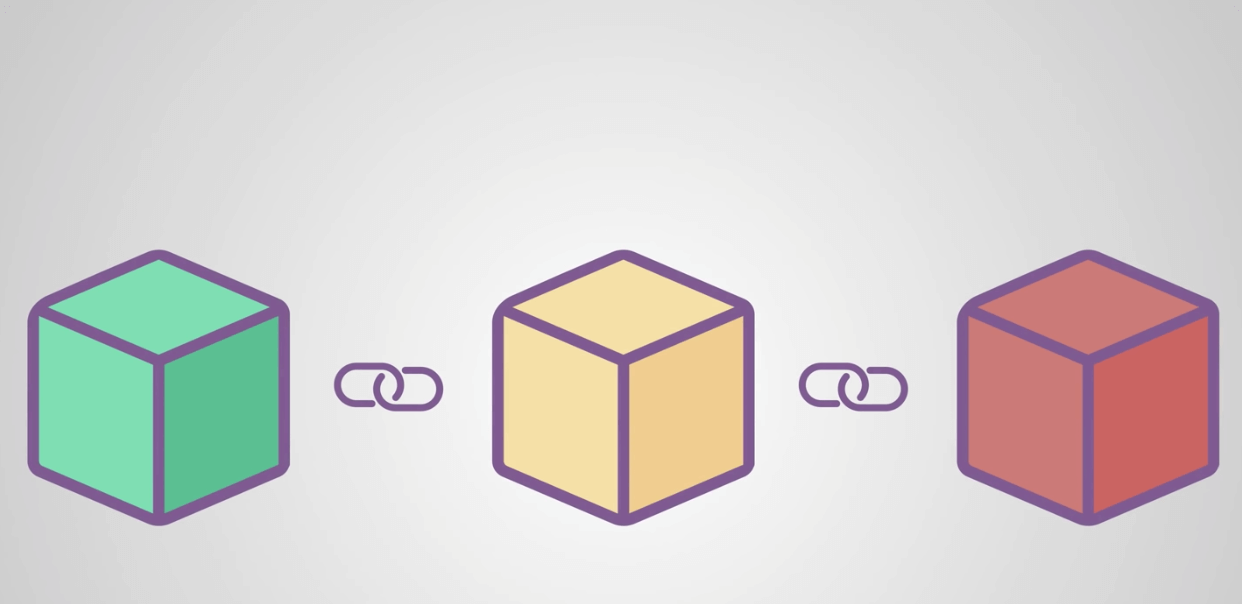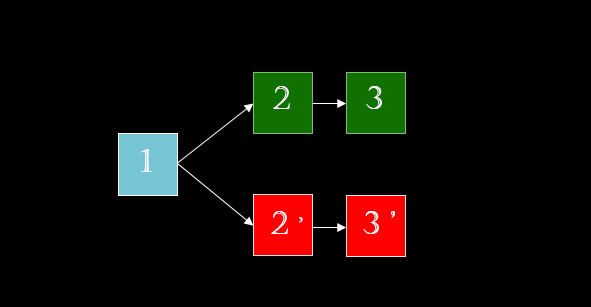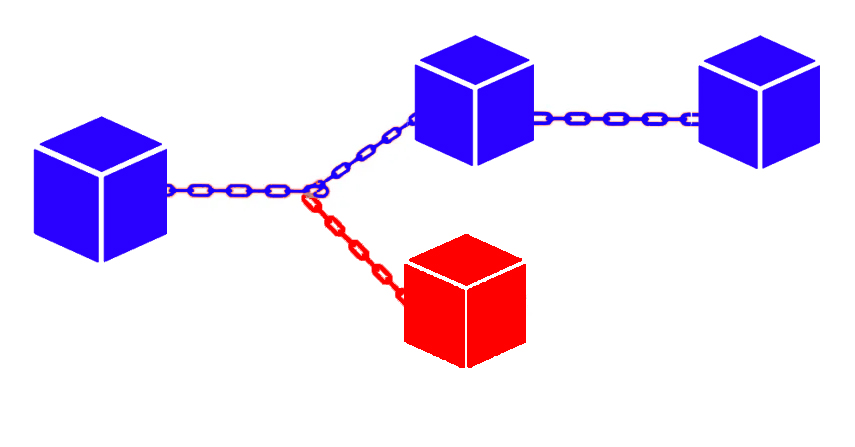What is Hard Fork?
In blockchain networks we often face with a concept called “Block”. These blocks contain transaction information. This information is written regularly in a structure called “Merkle Tree”.
In the following we will delve more into this structure, but for now that suffices to know that this structure is extremely regular and transactions can be placed in this structure in order.
In blockchain these blocks of information are interconnected. This process would be the same as writing the last letter of the previous page on the next one. Hence, it would be possible to validate that the order and integrity of blocks are ensured. This process is much more complicated, but as a simplification here and now we assume this.
These blocks are placed as follows:

If two blocks are placed after a block and both are branched from the previous block, this is called hard fork.

In this picture we see two green and red chains which are both branched from the blue block. Here we call green and red chains as hard forks of blue chain.
Different Types of Hard Fork
Network Upgrade
In this case, only one chain is formed and thus network rules change in the new chain. Here no new coin is produced and only upgrade occurs in the network.
During the process of mining, it is possible that two miners simultaneously produce the same block. In this case the network status will be determined by next miners concerning which block they choose to validate.
The block which has been continued is called the main chain and the one which has been ceased or halted to get mined is commonly known as “orphaned block”.
That being the case, it is commonly said that you have to wait six blocks to confirm a transaction. If a transaction gets the approval five times, it will be irreversible and won’t remain in the orphaned block.
The picture below shows this:

In this picture the blue chain is the main chain and the red one is the orphaned block.
Cyber Attack to the Network
If a hacker or a group of cyber criminals perform a 51% attack, that is to add as much malicious mining power to the network as the total sum of network mining power, consequently they can create a chain utterly similar to an orphaned chain and continue to reproduce the same as much they desire. Henceforth they can add whatsoever transactions to the network and accordingly modify the network rules with no interference.
In the following picture, the red chain is produced by the hackers:

Forks and New Coins
It might be the case that a group desires to produce a new coin. In this case, the main chain will continue to perform in a determined way and the newly created one will likewise continue its way. Every person who has coins in the main chain and before the blockchain split, will also have the same coins in the newly created chain.
Bitcoin as one of the most prominent cryptocurrencies of blockchain networks has introduced plenty of forks thus far.
Most Famous Bitcoin Hard Forks Ever Produced
Bitcoin XT
This split appeared in 2015 and by that time introduced itself as the first serious bitcoin hard fork. A new coin was formed in this hard fork. Its new feature was to increase the block size to 8 MB. Every person who already has bitcoin, can also claim the new coins either. Currently this coin is not used anymore and is so-called dead.
Bitcoin Classic
After the termination of Bitcoin XT, Bitcoin Classic appeared to increase the maximum size of the transaction blocks to 2MB. This hard fork was active until mid-2016.
Bitcoin Unlimited
This bitcoin hard fork was a new coin in which the miner decided the block size. Bitcoin Unlimited disappeared quickly.
Segregated Witness
This hard fork which took place in late-2015 was a network update and did not give rise to a new coin. This hard fork merely changed the position of the transaction signature. Some bitcoin nodes have not yet accepted this update. In this update the volume of each transaction is reduced and its addresses start with BC1. Currently this update is still active and is recognized with “Segwit”.
Bitcoin Cash
After the appearance of Segregated Witness hard fork, a group in the blockchain community discussed the block size and demanded an increase in the overall block size. After that they did not come up with an agreement, in August 2017 they split off from the community and gave rise to a new bitcoin hard fork so-called Bitcoin Cash.
Bitcoin Gold
This hard fork occurred on August 24th, 2017 in the bitcoin network and consequently it gave rise to a new coin. This hard fork was designed to prevent the use of special devices called ASIC for mining and permit the mining to be done by the means of personal computers.
Bitcoin SV
This hard fork came about on November 15th, 2018 from the Bitcoin Cash network. Devotees of Craig Steven Wright, who has publicly claimed to be bitcoin creator and calls himself Satoshi Nakamoto, developed the Bitcoin SV (commonly stands for Satoshi Version) and made the block size unlimited.
Conclusion
Hard fork is a fundamental concept in the realm of blockchain technology. It often occurs when blockchain network codes are modified to improve the overall performance or initiate new features to be implemented. Via the means of hard forks, developers can upgrade network capacity and give rise to a new coin. It also increases the speed of transactions in comparison to its predecessors.
Something that might be interesting about hard forks is that news coins which are introduced as the result of network development will strengthen the dominance of a certain cryptocurrency in the market. Therefore, it is not always embraced as a source that brings about diversity, rather it is conceived as an instrument to reinforce the utilitarian power of a given network in the markets.